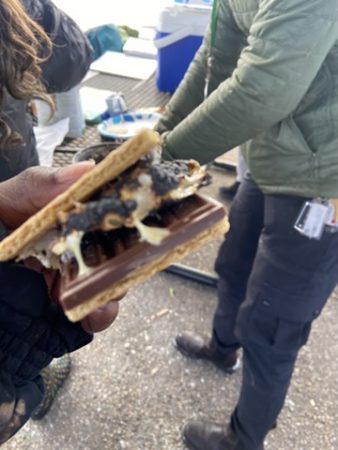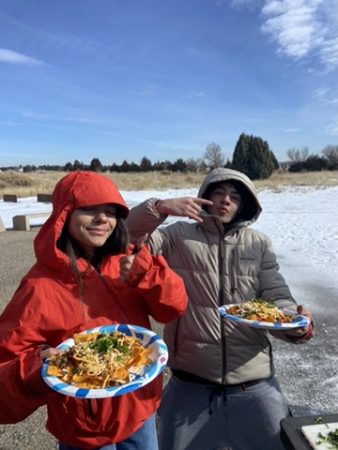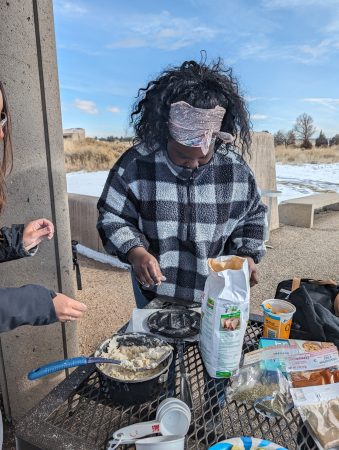Written by Senior Cottonwood Field Instructor, Amy Kopkin Atkins
Thermoregulation, the process of staying warm when it’s cold outside, may sound complex, but it’s definitely not rocket science… It’s more like biology.
Outside Heat Source
The “go to” way to stay warm in winter is an outside (meaning out of the body) heat source. Things like fire, heat packs, hot drinks, hot water bottles, sun, and body heat. Students at Rise Up Community School in Denver tested their mettle against the freezing cold temperatures this week by going to Chatfield State Park for a little competition against the elements. They built fires without matches or lighter fluid. The warmth from the fire not only lifted everyone’s spirits but created the perfect place for us to make some divine food!
Interior Heat Source
Think of your digestive system as the fire and carbohydrates and proteins as the fuel. Your digestive system generates heat as it works to metabolize food. In this case, the protein was a mouthwatering carne asada inspired ground beef and the carbohydrates were homemade tortillas. The students cheffed it up with onions, garlic, cilantro and lime juice and created delicious piles of tacos and nachos that created fire in our bellies and warmth in our souls. The feast was incredible and provided the perfect backdrop to catch students doing something well and to hand out a few complements.

Attitude
A positive and relaxed mind will keep blood vessels at a normal level of dilation.While we feasted on the aromatic food before us, we spent some time recognizing each member of our group for their knife skills, fire skills, and interpersonal skills. It felt good to both give and receive compliments and recognize people for the hard work they did to help us stay warm against the elements.

On the way back to Rise Up, with full bellies and warm hearts, we realized that we conquered the elements and had a lovely day in the great, snowy outdoors!


